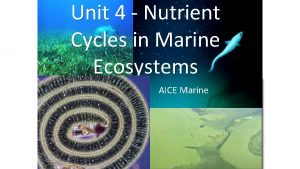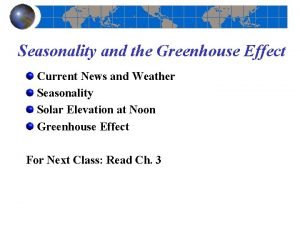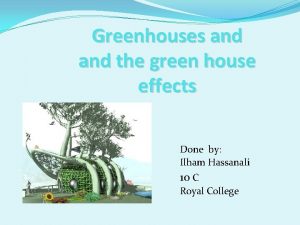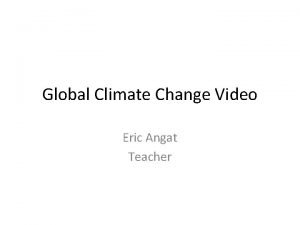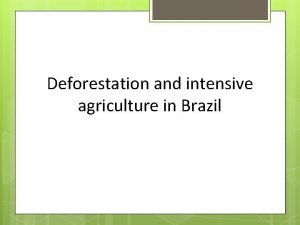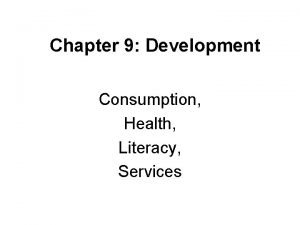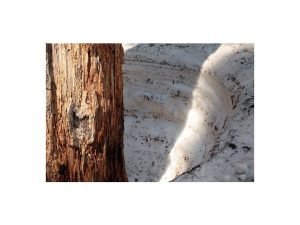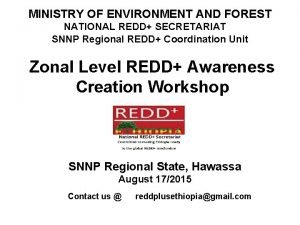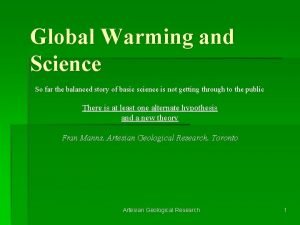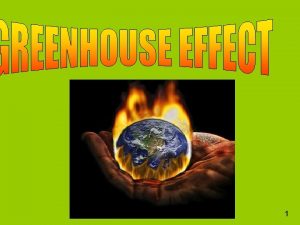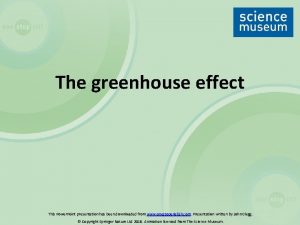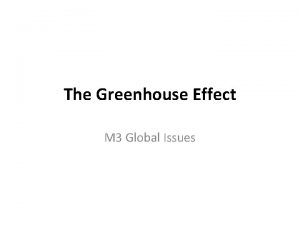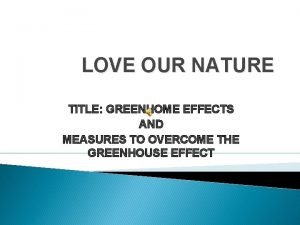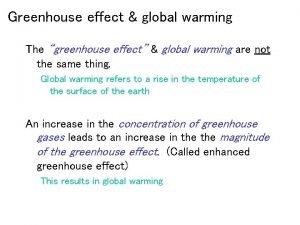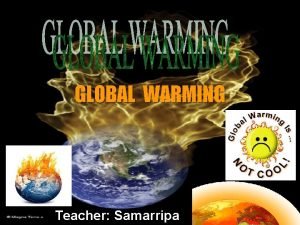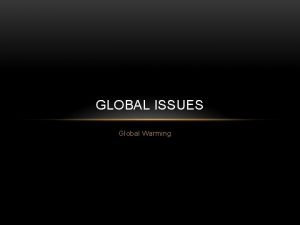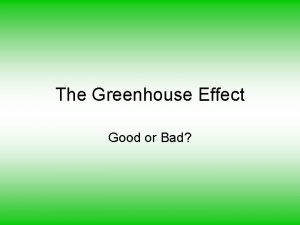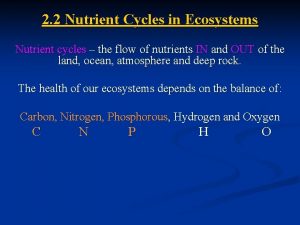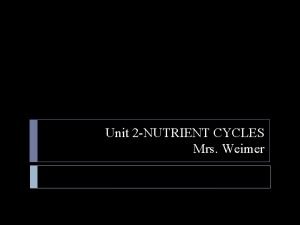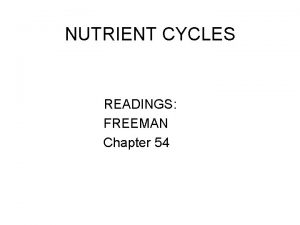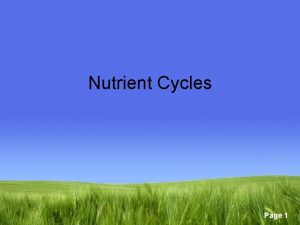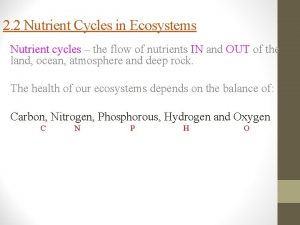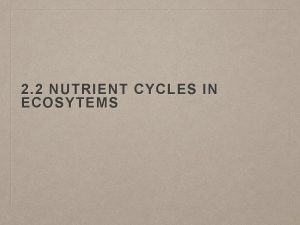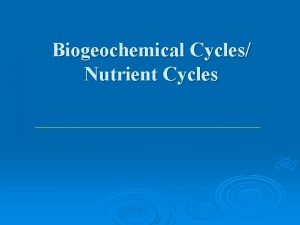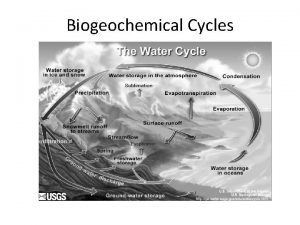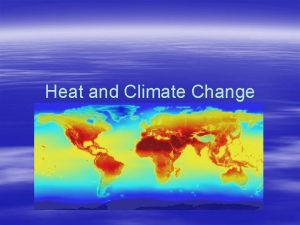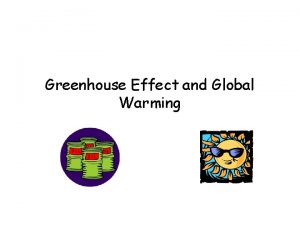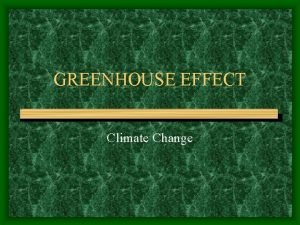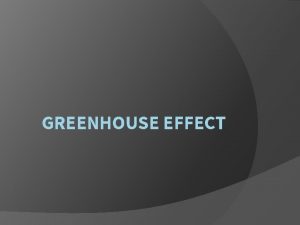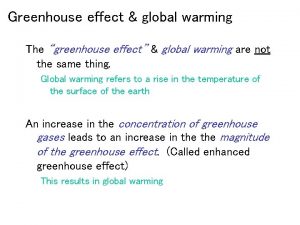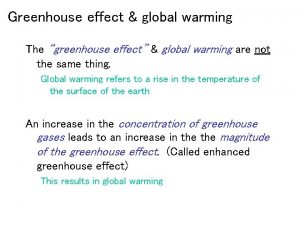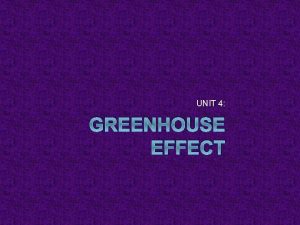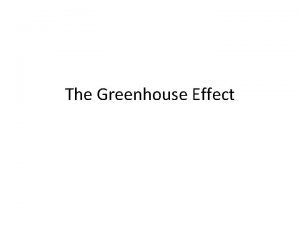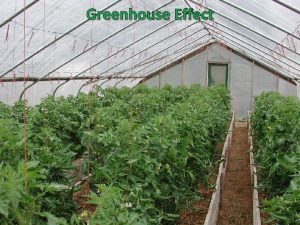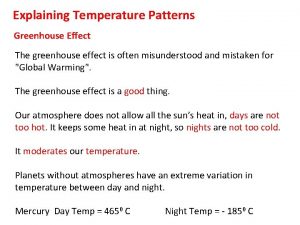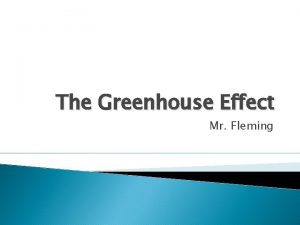Nutrient cycles 6 2 The greenhouse effect and
























- Slides: 24

Nutrient cycles 6. 2 The greenhouse effect and global warming

Crossword answers Answers Down 2. Respiration 7. Photosynthesis 8. Global warming 9. Greenhouse gas 10. Fossil fuels 1. Climate change 3. Methane 4. Decomposers 5. Ecosystem 6. Deforestation

Learning Objectives Success Criteria Recall what the greenhouse effect is and what the major greenhouse gases are Recall how greenhouse gases may contribute to global warming Understand evidence for the causes of climate change and global warming Describe the consequences of global warming Analyse, interpret and evaluate data relating to evidence of the causes of global warming the effects of global warming

What is the evidence for climate change? Data collected by climate scientists can be used to answer two key questions: l Is the climate really changing rapidly? l Is human activity causing this climate change? These scientists are setting up an Automatic Weather Station on the Djankuat glacier, in the Caucasus Mountains in Russia. Monitoring glaciers has produced startling evidence about the rate at which some glaciers are melting.

How are carbon dioxide levels measured? Atmospheric carbon dioxide levels are measured around the world to detect global trends in this greenhouse gas. The standard measurement used is parts per million (ppm). In 2005, levels were around 370 ppm. This means for every million parts of air, 370 parts were carbon dioxide. Research stations for monitoring atmospheric gases are usually sited in remote places. The Mauna Loa Observatory in Hawaii, is located at an altitude of 4, 170 metres.


Digging into the past How can we gain measurements of CO 2 levels and global temperatures in the past? Measuring the proportion of carbon isotopes in shells from beneath the ocean bed we can date these fossils (radiocarbon dating). Measuring the proportion of oxygen isotopes reflects the proportion of them in the sea when the organism was alive. The proportion of oxygen isotopes in the sea varies with each ice age and thus in turn reflects global temperatures at the time.

What are ice cores? Ice cores are long columns of ice that are drilled out of glaciers. Ice cores are studied to increase understanding of the history of climate as they provide data about the distant past. Air bubbles trapped in the ice are used to estimate carbon dioxide levels thousands of years ago. This is called a proxy record. These are indirect climate measures of the climate that have not been recorded using instruments. Tree rings are another type of proxy record.

Application and how science works Read the following section and answer questions 1 and 2 Digging into the past Now self-assess your work using the answers in the back of the book

Data from ice cores

CO 2 conc. (ppm) How different are carbon dioxide levels today? These graphs show carbon dioxide concentrations have changed over time. 400 300 200 100 0 400 300 200 100 CO 2 conc. (ppm) years before present (thousands) 400 Around 200 years ago, carbon dioxide levels 0 were about 280 ppm and are now about 380 ppm. 300 According to records, this is about 27% more than at any time in the last 400, 000 years. 200 100 0 1960 1980 year 2000 How might this affect the climate?

Temperature change

CO 2 conc. (ppm) difference from average temp. (°C) Are temperature and carbon dioxide related? The global average temperature has increased at the same time as the levels of carbon dioxide have risen. 0. 6 0. 4 0. 2 0 -0. 2 -0. 4 -0. 6 1861 1941 year 2001 400 300 200 100 0 1960 1980 year 2000 However, it is not correct to say that carbon dioxide levels have caused this temperature change, because there are other factors involved. How should the data be discussed?

How should I talk about the climate data? It is important to be very careful about the words used to discuss scientific data. Collected data shows that temperature and carbon dioxide levels in the atmosphere have increased at the same time. It might seem to make sense to say that the rise in carbon dioxide is causing the temperature rise but this is incorrect. l How do you know that it is not the temperature increase that is causing carbon dioxide levels to rise? l Can you say for certain that carbon dioxide is the only factor in the change of temperature? It is more correct to say that there appears to be a positive relationship between carbon dioxide levels and temperature.

Consequences of global warming Melting polar ice caps extinction of plants and animals e. g. Polar bear Sea levels rises

Consequences of global warming Rising sea levels due to thermal expansion. flooding of low lying areas e. g. Bangladesh Flooding of cities and fertile land e. g. Nile delta Salt water extending further up rivers

Consequences of global warming Higher temperatures and less rainfall could lead to: Failure of crops in some areas More drought resistant species used Distribution of wild plants would change Expansion of xerophytes These changes would affect the distribution of animals that are dependent on the plants

Consequences of global warming Greater rainfall and intense storms due to changes in climate patterns. This would affect the distribution of plants and animals.

Consequences of global warming Life cycles and populations of pest species would alter as they adapt to the changed climate Insects carry many human and crop pathogens e. g. Malaria e. g. Green shield bug – known to be spreading further northwards in England.

Application and how science works Read the following sections and answer the questions on page 94 of the textbook. Global warming and crop yields Global warming and insect pests Now swap books and peer-assess your work using the answers in the back of the book

Homework 1. Complete Application and How Science Works questions from page 94 of the textbook 2. Endangered species and Climate change Choose one as a case study (a) describe how it is being affected by climate change (b) explain what is being done to help conserve and protect the species from extinction

Consequences of global warming Benefits in some areas Increased rainfall for drinking water Crops grown where it is currently too cold Increased rate of photosynthesis and hence productivity

Learning Objectives Success Criteria Recall what the greenhouse effect is and what the major greenhouse gases are Recall how greenhouse gases may contribute to global warming Understand evidence for the causes of climate change and global warming Describe the consequences of global warming Analyse, interpret and evaluate data relating to evidence of the causes of global warming the effects of global warming

Climate change - the impacts
 Nutrient broth vs nutrient agar
Nutrient broth vs nutrient agar Biogeochemical cycles apes
Biogeochemical cycles apes Gersmehl diagram
Gersmehl diagram A terrestrial food web
A terrestrial food web Thank you
Thank you Why is the greenhouse effect important
Why is the greenhouse effect important Why is the greenhouse effect important
Why is the greenhouse effect important Greenhouse effect
Greenhouse effect Greenhouse effect
Greenhouse effect Enhanced greenhouse effect
Enhanced greenhouse effect How to stop greenhouse effect
How to stop greenhouse effect Greenhouse effect
Greenhouse effect Natural greenhouse effect
Natural greenhouse effect Greenhouse effect
Greenhouse effect Greenhouse effect on plants
Greenhouse effect on plants Greenhouse effect
Greenhouse effect Greenhouse effect powerpoint
Greenhouse effect powerpoint Causes of greenhouse effect
Causes of greenhouse effect Greenhouse effect in order
Greenhouse effect in order Conclusion of greenhouse effect
Conclusion of greenhouse effect Greenhouse effect paragraph
Greenhouse effect paragraph Greenhouse effect
Greenhouse effect Enhanced greenhouse effect
Enhanced greenhouse effect Greenhouse effect in order
Greenhouse effect in order Climate stability
Climate stability



